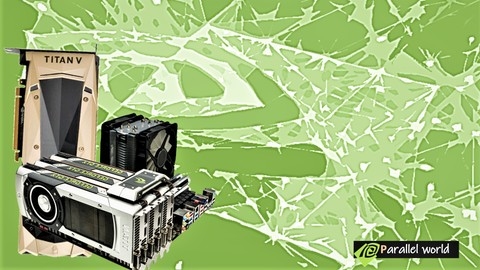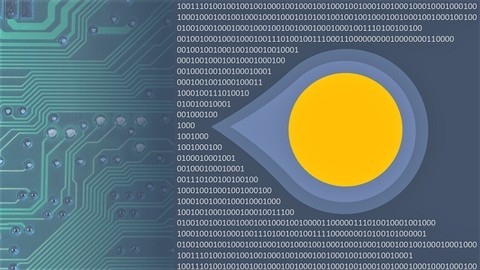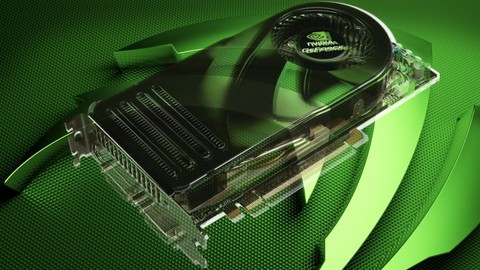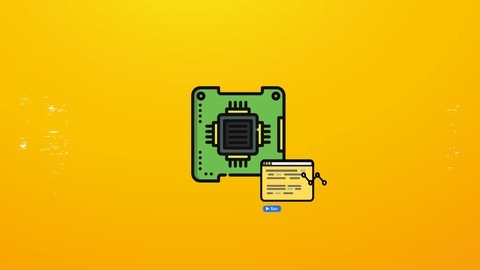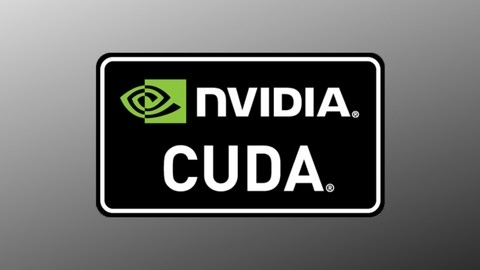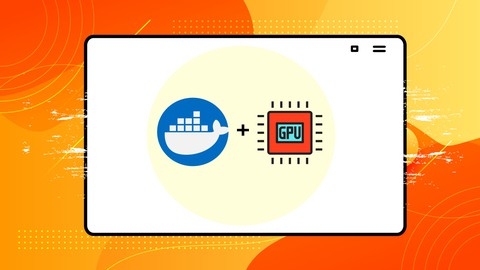CUDA, or Compute Unified Device Architecture, is a parallel computing platform and application programming interface (API) created by NVIDIA.
It enables developers to harness the power of GPUs for general-purpose computing, significantly accelerating applications that involve complex calculations or large datasets.
Learning CUDA empowers you to develop high-performance applications in various fields like scientific computing, machine learning, and computer graphics.
Finding a good CUDA course on Udemy can be challenging with so many options available, especially if you are a beginner.
It can be difficult to determine which course is best suited to your learning style and goals.
You want a comprehensive course that provides a strong foundation in CUDA programming, teaches you best practices, and offers hands-on experience through practical projects.
We recommend CUDA programming Masterclass with C++ as the best overall CUDA course on Udemy.
This course stands out for its comprehensive coverage, starting with the fundamentals of CUDA programming and moving on to advanced topics like memory management, performance optimization, and parallel algorithms.
The instructor provides clear explanations, real-world examples, and practical exercises to help you solidify your understanding.
While this course is our top pick, there are many other excellent CUDA courses on Udemy.
Keep reading to explore our recommendations for different learning levels and specific areas of interest, including courses focused on CUDA for machine learning, computer vision, and high-performance computing.
CUDA programming Masterclass with C++
This course provides a comprehensive introduction to CUDA programming and parallel computing with GPUs.
You will start by learning the basics of parallel programming, CUDA programming model, and how to set up the CUDA toolkit.
The course covers essential CUDA concepts like thread organization, memory transfers between host and device, and unique index calculations.
You will dive deeper into the CUDA execution model, understanding warps, warp divergence, resource partitioning, latency hiding, and occupancy.
The course teaches optimization techniques using nvprof and explores parallel reduction algorithms as examples of synchronization and warp divergence.
The CUDA memory model is covered in detail, including different memory types, memory management, pinned memory, zero-copy memory, and unified memory.
You will learn about global memory access patterns, array of structs vs. struct of arrays, and matrix transpose algorithms.
Shared memory and constant memory are explored, with topics like shared memory access modes, memory banks, static/dynamic shared memory, shared memory padding, and using shared memory for matrix transpose.
The course also covers synchronization, warp shuffle instructions, and parallel reduction with shared memory.
CUDA streams and events are introduced, covering asynchronous functions, overlapping memory transfers and kernel execution, stream synchronization, explicit/implicit synchronization, and timing with events.
Performance tuning is discussed with instruction-level primitives like floating-point operations, standard/intrinsic functions, and atomic functions.
Parallel patterns like scan and compact algorithms are also covered.
Finally, you will get a bonus introduction to image processing with CUDA, covering topics like digital image fundamentals, human perception, image formation, and using OpenCV.
Throughout the course, you will work on programming exercises to reinforce the concepts learned.
This hands-on approach ensures you gain practical experience in CUDA programming.
Introduction to GPU computing with CUDA
The course starts by introducing you to GPU computing with CUDA and the related parallelization paradigms.
You’ll learn about threads, blocks, cores, and streaming multiprocessors, which are essential concepts in CUDA programming.
The course also covers heterogeneous computing and the NVIDIA compiler driver, as well as how to download, install, and set up IDEs for CUDA development.
Once you have the basics down, you’ll dive into CUDA programming itself.
You’ll learn about the CUDA program workflow and work through simple examples, including error checking and handling.
But the real meat of the course is in the section on memories and performance.
You’ll learn about the different types of CUDA memories, such as global and shared memory, and how to optimize your code for better performance.
This includes techniques like coalesced global memory accesses and using shared memory effectively.
The course even covers CUDA profiling and the Visual Profiler, which is a powerful tool for analyzing and optimizing your CUDA code.
Throughout the course, you’ll work with practical examples and code snippets, such as adjacent differences, moving averages, and two-dimensional grids.
These examples are provided as .cu files, so you can easily create your own projects and follow along.
With its focus on performance optimization and hands-on examples, you’ll be well-equipped to write efficient CUDA code for your GPU-accelerated applications.
Cuda Basics
You will start by learning the basics of CUDA C and how to install the CUDA toolkit.
The course then dives into the CUDA hardware design and execution model, covering important concepts like grids, threadblocks, and warps.
You will learn by example with a vector addition program that demonstrates memory allocation, data transfer, and kernel launches.
The course covers performance optimization techniques like occupancy, shared memory usage, and avoiding bank conflicts.
It also explores advanced topics like memory coalescence, constant memory, atomic functions, warp-level primitives, and dynamic parallelism.
The course teaches different memory management techniques, including pinned, zero-copy, and unified memory.
You will also learn how to use streams to overlap operations and program for multiple GPUs.
Profiling with nvprof is covered to analyze memory performance.
Throughout the course, you will work on hands-on examples like parallel reduction, matrix transpose, and histogram calculation.
These examples reinforce the concepts and provide practical experience in CUDA programming.
By the end, you will have a solid understanding of CUDA and be able to write efficient parallel programs for GPUs.
Beginning CUDA Programming: Zero to Hero, First Course!
You’ll start with the fundamentals, learning about heterogeneous computing, the GPGPU software layer, and how GPUs compare to CPUs.
From there, you’ll dive into the core CUDA concepts like threads, blocks, and grids.
The course covers the CUDA memory hierarchy and how to program with threads effectively.
Hands-on examples like the “Hello World” program and vector addition with different thread/block configurations will solidify your understanding.
A key focus is matrix multiplication, which you’ll implement first on the CPU and then optimize for the GPU using shared memory.
These coding examples are invaluable for grasping how to structure CUDA programs for maximum performance.
The course also touches on broader parallel programming concepts like parallel for-loops, indexing, memory management, and synchronization.
Interactive playgrounds are provided so you can experiment with CUDA code right in your browser.
You’ll learn the theory behind CUDA’s parallelism model while getting plenty of coding practice with fundamental algorithms like vector addition and matrix multiplication.
The interactive examples make the concepts concrete and engaging.
CUDA GPU Programming Beginner To Advanced
The course starts by introducing you to the theory and background behind CUDA and GPU programming.
You’ll learn about the history and motivation for using GPUs for general-purpose computing.
Next, you’ll dive into the core concepts of CUDA, NVIDIA’s parallel computing platform.
This includes key ideas like CUDA memory models, the functional pipeline, and the programming pipeline along with the CUDA Toolkit.
You’ll even go through a matrix multiplication example to see CUDA in action.
The course covers important parallelism models like MPI and OpenMP, allowing you to understand how CUDA fits into the broader landscape of parallel computing.
You’ll also get an overview of the sample programs included in the CUDA Toolkit.
Throughout, you’ll learn practical skills like CUDA performance benchmarking, so you can optimize your CUDA programs for maximum performance.
The course culminates with a conclusion section that ties everything together and points you towards next steps for further learning.
With its comprehensive coverage of both theoretical concepts and hands-on coding examples, this course equips you with a solid foundation to start programming with CUDA and unleashing the power of GPU acceleration in your applications.
Learn CUDA with Docker!
You’ll start by learning the fundamentals of CUDA, including its relationship with GPUs and how it works under the hood.
From there, the course dives into the core concepts of CUDA programming, such as threads, blocks, and grids.
You’ll learn how to index CUDA threads in 1D and 2D, understand thread synchronization, and explore the concept of CUDA warps.
Memory management is a crucial aspect of CUDA programming, and the course covers different memory models in depth.
You’ll also get hands-on experience with practical CUDA applications, such as vector addition and matrix multiplication.
The course introduces you to CUDA streams, which allow you to overlap data transfer and kernel execution for better performance.
Additionally, you’ll learn how to set up and use the NVIDIA Docker Container Toolkit, enabling you to run CUDA applications in a containerized environment.
For those new to CUDA, the course includes a “CUDA for Dummies” section, which covers high-level concepts like the programming model, parallel for-loops, indexing, memory management, and synchronization.
Throughout the course, you’ll have access to interactive code playgrounds and live classes, allowing you to practice and reinforce your learning.
The course also provides references for further exploration.
One unique aspect of this course is that it teaches you how to set up and use a GPU simulator with Docker, allowing you to run CUDA code even without a physical GPU.
This can be particularly useful for learning and experimentation purposes.
The Complete Course of CUDA Programming 2024
This course starts with an introduction to parallel computing concepts and the CUDA programming model.
You’ll learn about threads, blocks, and grids - the fundamental building blocks of CUDA programs.
After setting up your development environment, the course dives into writing your first CUDA code.
You’ll learn how to debug and profile CUDA programs, ensuring your code runs efficiently.
Synchronization and memory management techniques are covered in-depth, including coalescing memory access patterns and utilizing different memory types like constant and texture memory.
As you progress, you’ll explore advanced topics like managing multiple GPUs, using CUDA libraries for common parallel algorithms, dynamic parallelism, and recursive GPU programming.
Optimization strategies for maximizing parallelism and throughput are discussed, along with identifying and resolving performance bottlenecks.
The course also includes real-world case studies and a hands-on project, allowing you to apply your skills to practical scenarios.
You’ll learn how to profile and fine-tune your CUDA applications using tools like the CUDA Profiler and NVIDIA Visual Profiler.
CUDA Programming - From Zero to Hero
This course takes you from zero knowledge of CUDA programming to becoming a proficient CUDA programmer.
You’ll start by learning the fundamentals of parallel programming - what it is, why it’s needed, and the basics of threads.
This lays the groundwork for understanding CUDA’s parallel computing architecture.
Next, you’ll learn how to install CUDA on both Nvidia and non-Nvidia machines, ensuring you can follow along with the course material regardless of your hardware setup.
Once you have CUDA set up, the course dives into writing your first CUDA programs with multiple versions of the classic “Hello World” example.
You’ll also practice coding exercises like printing your name a specified number of times.
A crucial aspect is understanding how to communicate between the GPU and CPU memory.
The course covers initializing arrays in parallel, adding constants to array elements, and the typical data flow between the CPU and GPU.
You’ll then explore the core CUDA concepts of kernels, grids, blocks, and threads - the building blocks of parallel execution.
This includes accessing grid and block dimensions, and addressing potential issues with thread block sizes.
As you progress, the course tackles more advanced topics like warps (groups of threads executing in lockstep) and thread divergence, which can impact performance.
You’ll analyze code to identify divergence and learn techniques to mitigate it.
Hands-on exercises reinforce the concepts, such as finding elements in parallel and encrypting/decrypting messages using CUDA’s parallel processing capabilities.
By the end, you’ll not only understand CUDA programming but also gain insights into parallel architectures, setting you up to leverage the power of GPUs for high-performance computing tasks.
Also check our posts on:
